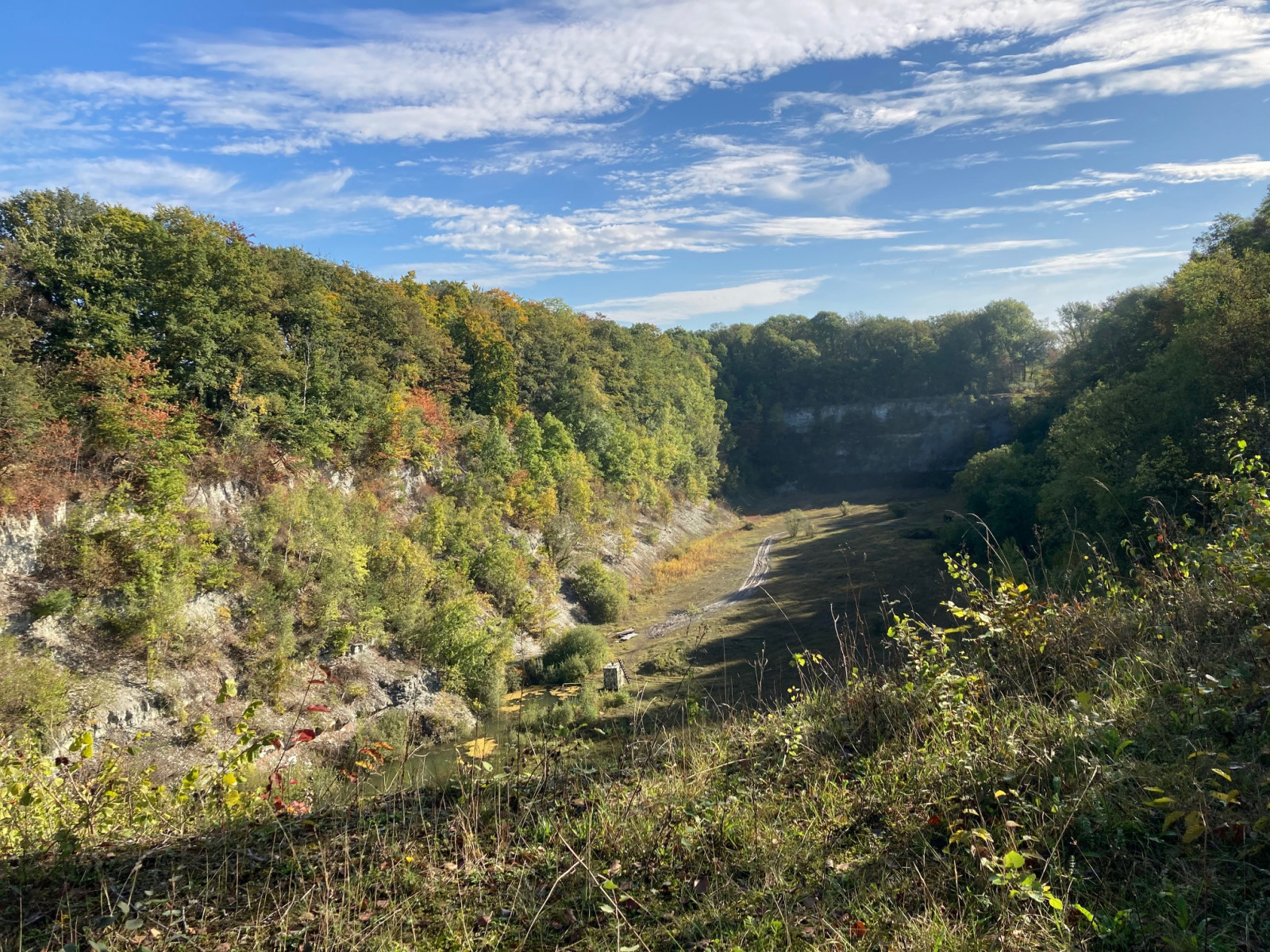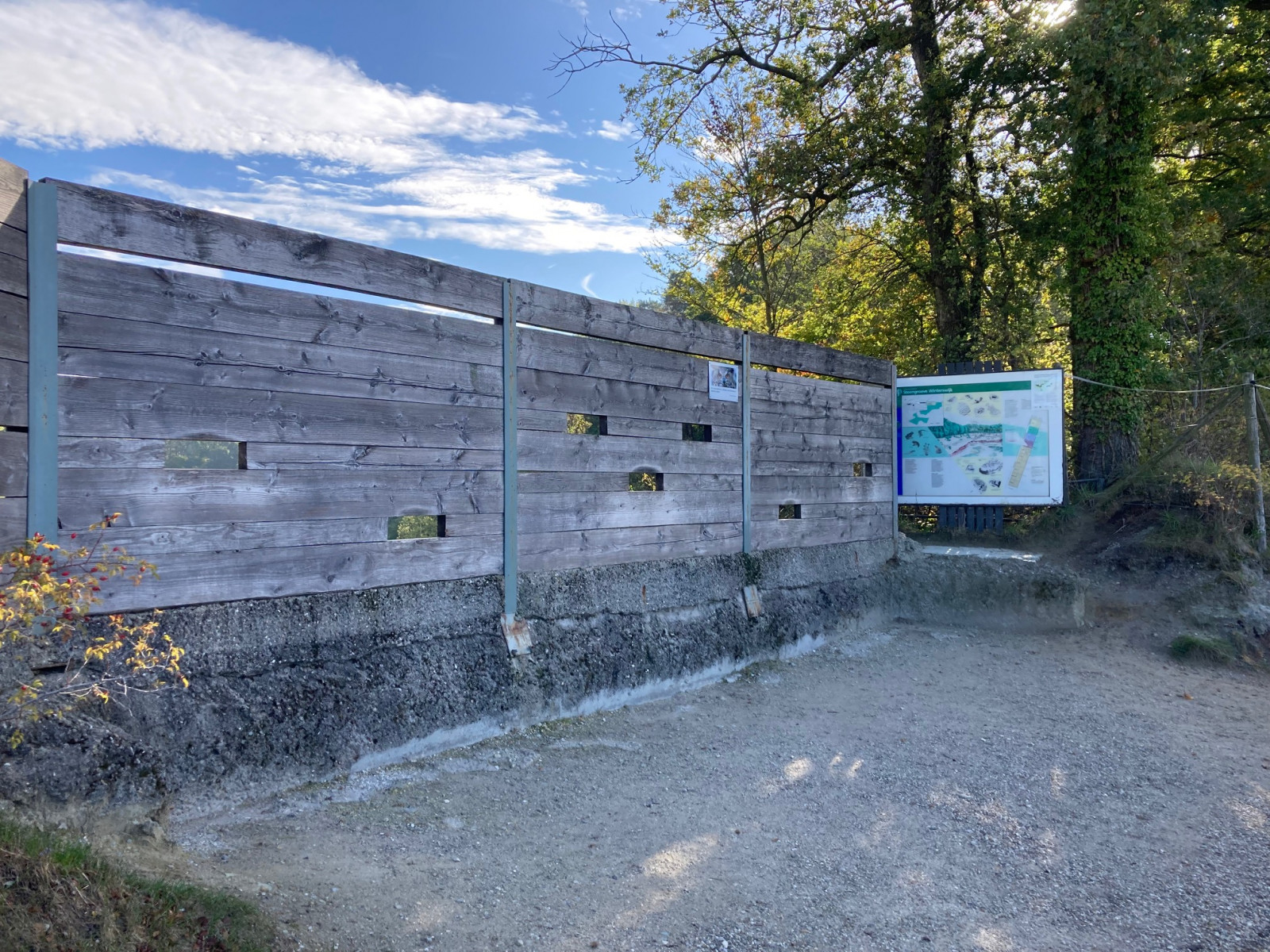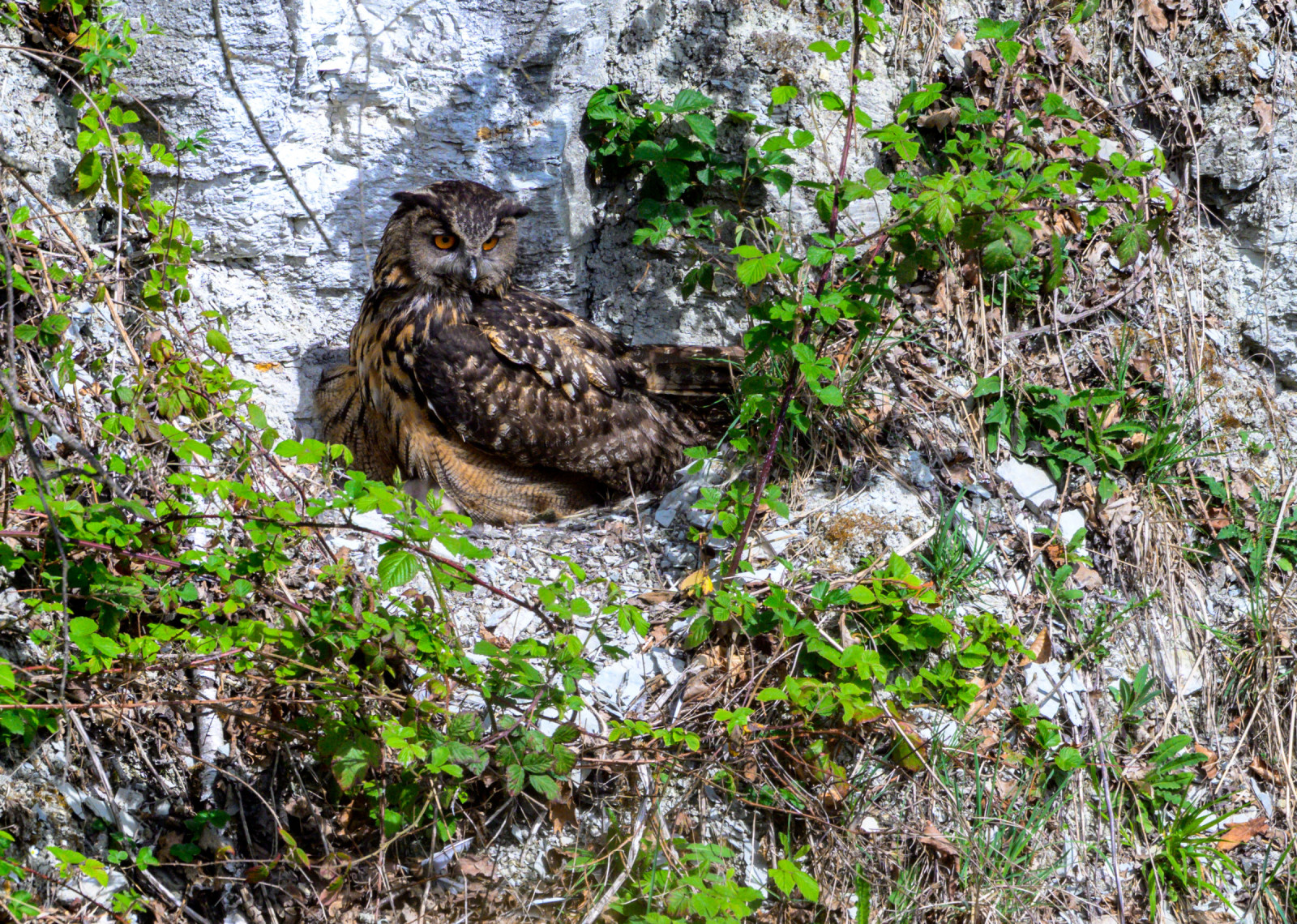Charger images
Les formats d'image autorisés sont de type jpeg, png ou gif
La taille maximale du fichier doit être de 20MB



A quarry located east of Winterswijk. One of the best places in the Netherlands to observe Grand-duc d'Europe!
The Winterswijk Quarry is an active quarry located east of Winterswijk and is mined for (mainly) limestone. The area is famous for its fossil findings, like bones and fossilized tracks of multiple species of extinct reptiles, called Nothosaurs. The oldest part of the quarry has been given back to nature and is home to a breeding pair of Grand-duc d'Europe. An observation screen has been placed near the old quarry to observe the nesting Grand-duc d'Europe. They breed on a small ledge on the northwestern part of the quarry wall.
Surrounding the valley, extensive forests are located and provide ideal habitat for many species of breeding bird, like Gobemouche gris, Rougequeue à front blanc and Gobemouche noir. All five species of woodpecker can be found in the area, like Pic épeichette and Pic mar. The quarry itself is also home to Rougequeue noir.
The active quarry, west of the Grand-duc d'Europe quarry, contains multiple ponds and provide a great habitat for Petit Gravelot and Bergeronnette des ruisseaux. The scattered bushes and trees near the edge of the quarry are great for Bruant jaune, Fauvette grisette and Fauvette babillarde. In winter, Pie-grièche grise can be found here too. The quarry provides a great open view of the sky and is therefore a great spot for observing raptors, like Bondrée apivore, Milan royal and Autour des palombes.
_________________________
Nederlands: De Winterswijkse Steengroeve is ten oosten van Winterswijk is een van de beste plekken in Nederland om een oehoe in het wild te zien. De groeve staat ook bekend om zijn fossiele vondsten, zoals botten en gefossiliseerde sporen van meerdere soorten uitgestorven reptielen, de Nothosauriërs. Het oudste deel van de groeve is teruggegeven aan de natuur en herbergt een broedpaar Grand-duc d'Europe. Bij de oude steengroeve is een observatiescherm geplaatst om het nest van de Grand-duc d'Europe te observeren. Ze broeden op een kleine richel op het noordwestelijke deel van de steengroevemuur.
Rondom de groeve liggen uitgestrekte bossen die een ideaal leefgebied vormen voor vele soorten broedvogels, zoals Gobemouche gris, Rougequeue à front blanc en Gobemouche noir. Alle vijf soorten spechten komen in het gebied voor, zoals Pic épeichette en Pic mar. De groeve zelf is ook de thuisbasis van Rougequeue noir.
De actieve groeve, ten westen van de Grand-duc d'Europe groeve, bevat meerdere vijvers en vormt een geweldig leefgebied voor Petit Gravelot en Bergeronnette des ruisseaux. De verspreide struiken en bomen aan de rand van de steengroeve zijn ideaal voor Bruant jaune, Fauvette grisette en Fauvette babillarde. In de winter is Pie-grièche grise hier ook te vinden. De groeve biedt een open zicht op de lucht en is daarom een uitstekende plek voor het observeren van roofvogels, zoals Bondrée apivore, Milan royal en Autour des palombes.
The area is easy accessible due to the parking lot near the road and the unpaved pathway towards the observation screen.
_________________________
Nederlands: Het gebied is goed bereikbaar door de parkeerplaats bij de weg en het onverharde pad richting het observatiescherm.
Votre feedback sera transmis à l’auteur.rice de cette zone et à l’équipe éditoriale de Birdingplaces, qui l’utiliseront pour améliorer la qualité des informations. (Vous souhaitez publier un commentaire visible en bas de page ? Fermez cette fenêtre et choisissez l’Option 1 : « Publier un commentaire, un conseil ou une observation ».)
Veuillez fournir des suggestions d'améliorations ou d'ajouts au texte de ce site ornithologique.
Veuillez fournir vos suggestions d'améliorations ou d'ajouts à la carte.
Veuillez fournir des suggestions d'améliorations ou d'ajouts à la liste des oiseaux.
Cliquez sur l'icône de l'oiseau () Insérez les noms d'oiseau dans votre langue. Ils seront automatiquement traduits pour les autres usagers !